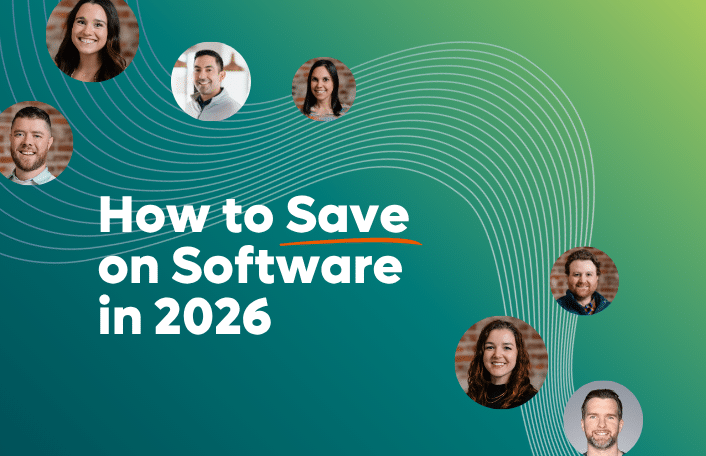
Zylo Wrapped 2025: SaaS Spend, AI Impact, and What’s Next
Table of Contents ToggleKey Themes That Shaped SaaS Management in 20251....
Back
Back
Search for Keywords...
Blog

Table of Contents
In the past decade, we’ve watched and maybe even experienced firsthand nearly every role within the enterprise changing its scope and focus. Marketing teams used to rely on traditional advertising and focused on top-of-the-funnel lead generation initiatives. Sales teams smiled and dialed hundreds of numbers each and every day in order to hit their daily activity quota. Customer success was barely even a known phrase, let alone a department within a company. And IT and procurement teams were tasked with evaluating and purchasing software—and usually on-premise software at that.
What do all of these job functions have in common in today’s tech-forward landscape? Technology has radically changed the way each role across an enterprise operates, measures, and ultimately scales. No longer do marketing teams rely on traditional advertising alone. Sales teams have ditched the concept of smiling and dialing hundreds of numbers each day. Customer success teams now exist to build and grow long-term relationships. And right in the middle of it all is the IT and procurement teams, led by the fearless Chief Information Officer (CIO), whose role has arguably changed (and will continue to change) the most.
The CIO in days past had the responsibility of overseeing all technology and computer systems and managing the IT and procurement teams with the goal of ensuring the enterprise was set up for technological success. IT and procurement would evaluate software for months or even years before making a decision or going through an RFP process. And even so, they would have to implement the new technology, host on local servers, and maintain and upgrade all of the existing systems. The process was daunting to say the least, and was viewed as a black hole by many. There were few worse things than having to initiate a new software evaluation process.
Today, however, the role of the CIO is comprised of innovation, connectedness, and empowerment, thanks in large part to the evolving SaaS marketplace and the new subscription economy.
The Department of Health and Human Services CIO, Beth Killoran, believes her role is one of an “innovation broker”. In a recent article, Beth commented, “If I can put innovation in place, interact with the industry to bring technology into the right places and if I can set the right goals, then I’ve done by job as CIO by making sure everyone around me is successful and has the technology and tools they need.”
Beth’s attitude is on point for how CIOs of the next generation need to think about innovation. Rather than setting up impossible evaluation processes and forcing painstaking procedures that scare stakeholders from suggesting ideas, the CIO should be at the forefront of innovation, testing new solutions or methods in a controlled environment. The CIO must set the right goals for the organization, interact with the industry to bring on the right technology at the right time, and then ensure each department has the tools they need for ongoing success.
SaaS applications are easy to purchase with just a few clicks of a button, a credit card, and a browser, so employees are skipping the procurement process entirely. Employees and teams are making innocent and small purchases on their own, such as $19/month contracts in order to avoid IT. The risk for the CIO and IT departments is that they’re losing visibility and control of the entire organizational tech stack, removing the ability to make the most economical decisions for their organization, and to protect important data and personal information.
The new CIO and IT departments need visibility into their entire SaaS tech stacks, not only to own the procurement and decision process for new applications and renewals, but most importantly to help guide individuals and departments and empower them during the purchase process. When IT departments gain complete visibility into the technologies each department, team, or individual is using, it helps everyone across the organization make more economical decisions and mitigate risk.
CIOs that are technologically-savvy are embracing this transformation of how technology is purchased and even managed across their enterprise organizations. TechTarget’s article, “Evolving IT Skill Sets” explains that IT departments, led by the CIO, will become brokers and integrators rather than services providers.
IT and procurement teams will no longer lead the entire purchase process as departmental heads take on the responsibility for their own teams, but will be integral in the process of ensuring the entire organization is connected. From HR to marketing to sales and beyond, the CIO will ensure its team focuses on sharing data and improving efficiency and scaling enterprise-wide processes.
The CIO is ultimately responsible for understanding the overall software ecosystem, and in order to gain visibility and manage the operating procedures and processes in which software is purchased, implemented, and managed, the CIO must create the infrastructure and the tools that others across the enterprise can use. Ultimately, the CIO must consider the entire business and think about the organization’s goals, first and foremost.
Interested in unlocking the power of SaaS at your organization? Follow @getzylo on Twitter for more information.
ABOUT THE AUTHOR

Eric Christopher
Eric Christopher is CEO and Co-Founder of Zylo, the leading SaaS management platform. After 14 years of buying and selling software, Eric knew there had to be a better way to manage cloud applications within a company. Eric started his career in sales at ExactTarget from 2002 to 2010. He spent the next six years in Chicago leading sales teams at Shoutlet and Sprout Social Inc., and founded Zylo in 2016.

Table of Contents ToggleKey Themes That Shaped SaaS Management in 20251....

Table of Contents ToggleThe Old Way Of The CIO3 Characteristics Of...

Table of Contents ToggleThe Old Way Of The CIO3 Characteristics Of...

Table of Contents ToggleThe Old Way Of The CIO3 Characteristics Of...
| Cookie | Duration | Description |
|---|---|---|
| cookielawinfo-checkbox-analytics | 11 months | This cookie is set by GDPR Cookie Consent plugin. The cookie is used to store the user consent for the cookies in the category "Analytics". |
| cookielawinfo-checkbox-functional | 11 months | The cookie is set by GDPR cookie consent to record the user consent for the cookies in the category "Functional". |
| cookielawinfo-checkbox-necessary | 11 months | This cookie is set by GDPR Cookie Consent plugin. The cookies is used to store the user consent for the cookies in the category "Necessary". |
| cookielawinfo-checkbox-others | 11 months | This cookie is set by GDPR Cookie Consent plugin. The cookie is used to store the user consent for the cookies in the category "Other. |
| cookielawinfo-checkbox-performance | 11 months | This cookie is set by GDPR Cookie Consent plugin. The cookie is used to store the user consent for the cookies in the category "Performance". |
| viewed_cookie_policy | 11 months | The cookie is set by the GDPR Cookie Consent plugin and is used to store whether or not user has consented to the use of cookies. It does not store any personal data. |
